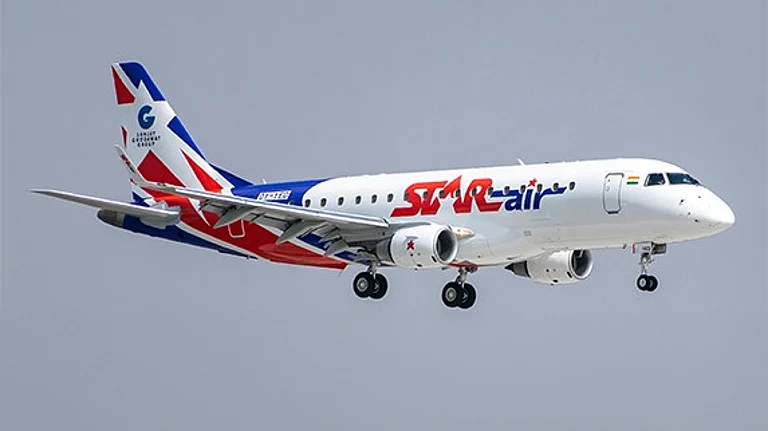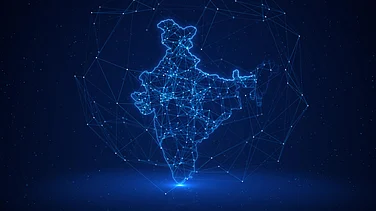Flying rights to foreign destinations have become a bone of contention between some international carriers and Indian airlines. The kerfuffle came to a head recently when Emirates president Tim Clark criticised India’s protectionist air access policy for foreign carriers. Countering Emirates president, IndiGo’s CEO Pieter Elbers on June 2 backed the country’s restrictive policy for foreign airlines and called it “fair and balanced”.
“If one side makes more and more noise, it doesn’t mean that you are more and more right,” said IndiGo’s CEO.
This has once again brought the bilateral flying rights agreement signed between India and the UAE in 2014 into focus at a time when capacity expansion of India’s carriers have suffered due to delayed deliveries of aircrafts. India has Air Service Agreements (ASA) with over 109 countries, including UAE, covering aspects relating to the number of flights, seats, landing points and codeshare. It does not permit an unlimited number of flights between itself and any other country.
Why is Emirates Complaining?
At the International Air Transport Association’s (IATA) annual general meeting held in New Delhi, Emirates president on Sunday highlighted his long-standing request to increase flying rights seat quota, which is currently fixed at 65,000 seats in each direction, i.e., Dubai-India and vice versa. He mentioned that as the number of people travelling between both countries has increased, so has the demand for air transport. But the seat quota fixed back in 2014 has not taken the demand surge into account.
“For every seat we sell, there are probably 10 takers...If you look at the way the Indian community has moved to and from Dubai over the last 10 or 11 years, you can see the scale of what is not happening by not giving seats to Emirates or wherever else it may be,” said Clark, the TOI reported.
Additionally, the fact that India has become the third largest aviation market in the world has garnered the attention of many airlines, including the UAE’s Emirates. The Indian civil aviation market is set to grow at 12.03% CAGR from $14.78 billion in 2025 to $26.08 billion in 2030, according to a report from market research firm, Mordor Intelligence.
At the IATA’s event, Prime Minister Narendra Modi highlighted that Indian airlines have continued to achieve double-digit growth, with 240 million passengers flying annually. The number is projected to reach 500 million by 2030, he added.
Why do Indian Airlines Disagree?
While the demand for air travel has increased, Indian airlines, including giants like IndiGo and Air India’s fleet expansion have not matched up to it, mainly due to aircraft shortage faced by them due to delayed deliveries by Boeing and Airbus. Meanwhile, Indian airlines have already exhausted their existing capacity even as they await more aircraft.
However, commenting on liberalising the air service agreement, Air India CEO Campbell Wilson said the move should be driven by equality of opportunity.
“There are large populations and traffic flows on both sides. Competition is what should then drive the agenda. Where such a balance isn’t there, there needs to be other considerations,” Wilson told Business Standard.
In 2023, Air India had placed an order to purchase 570 aircrafts from the two aircraft manufacturers and in the same year, its local rival IndiGo placed an order for 500 aircraft with Airbus. With the global supply chain disrupted due to various reasons, it will take over a decade for both aircraft manufacturers to deliver the required number of flights on time.
A few weeks ago, troubled by US President Donald Trump’s tariff hike China had refused to accept its pre-ordered Boeing aircraft. This was seen as a ray of hope for Indian airlines like Air India, who were eyeing to get these aircrafts. However, a deal struck between China and Boeing resulted in the American aircraft maker resuming deliveries to Chinese carriers.
Recently, Air India CEO said the airline has booked all available and suitable planes and has exhausted the global secondary aircraft leasing market.
With uncertainty around delivery of aircraft at a time when India’s major airlines are eyeing foreign skies and aiming to become “world-class”, the increase in seat quota is likely to increase competition for Indian flying giants like IndiGo and Air India.
This isn’t the first time when foreign and Indian airlines have clashed over air rights. The Indian government has reportedly received requests for more foreign flying rights from airlines of countries, including the UAE, Qatar, Singapore, Indonesia, Malaysia and Turkiye. Dubai Airport CEO Paul Griffiths too had highlighted the need for revision in seat capacity fuelled by India’s aviation infrastructure growth, the Hindu reported.
The growth of civil aviation in India has tempted both foreign and domestic players to increase their share in the market. But their ambition is curtailed by the present reality. For international airlines, the government’s tight grip on seat quota is a hinderance whereas for Indian airlines, delayed aircraft deliveries coupled with a shortage of aircraft to lease from the secondary market has clipped their wings to fly high in foreign skies.

































